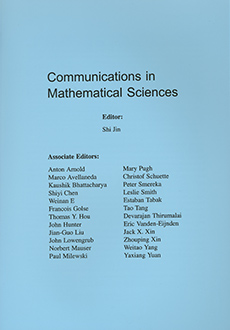Abstract
The Schrodinger-Poisson-Xalpha (S-P-Xalpha) model is a "local one particle approximation" of the time dependent Hartree-Fock equations. It describes the time evolution of electrons in a quantum model respecting the Pauli principle in an approximate fashion which yields an effective potential that is the difference of the nonlocal Coulomb potential and the third root of the local density. We sketch the formal derivation, existence and uniqueness analysis of the S-P-Xalpha model with/without an external potential. In this paper we deal with numerical simulations based on a time-splitting spectral method, which was used and studied recently for the nonlinear Schrodinger (NLS) equation in the semi-classical regime and shows much better spatial and temporal resolution than finite difference methods. Extensive numerical results of position density an Winger measures in 1d, 2d, and 3d for the S-P-Xalpha model with/without an external potential are presented. These results give an insight to understand the interplay between the nonlocal ("weak") and the local ("strong") nonlinearity.
Citation
Weizhu Bao. N.J. Mauser. H.P. Stimming. "Effective One Particle Quantum Dynamics of Electrons: A Numerical Study of the Schrodinger-Poisson-Xalpha Model." Commun. Math. Sci. 1 (4) 809 - 828, December 2003.
Information





